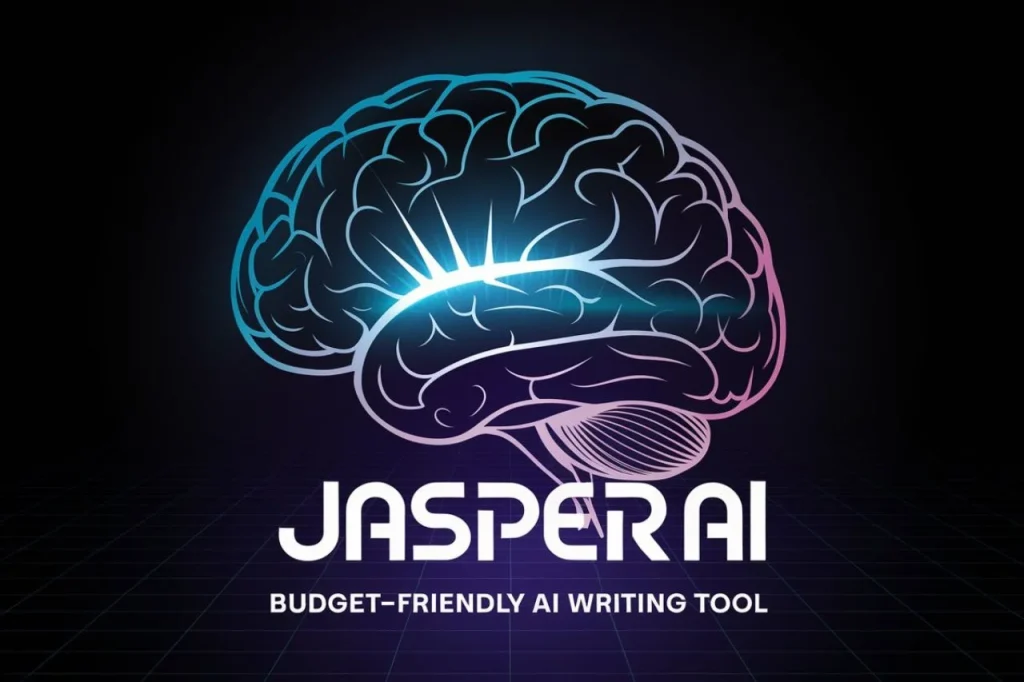ChatGPT No Filter The Truth Behind Unfiltered AI Chatbots
Published: October 2025
Table of Contents
- What Does “ChatGPT No Filter” Mean?
- Why Do People Search for ChatGPT No Filter?
- The Risks of Using Unfiltered or Jailbroken ChatGPT
- Safe and Legal Alternatives to ChatGPT No Filter
- How to Make ChatGPT More Flexible (Without Removing Filters)
- Popular Myths About “ChatGPT No Filter”
- Best Use Cases for ChatGPT With Smart Prompts
- Real Unfiltered ChatGPT Alternatives (That Are Actually Safe)
- Ethical AI Use – Why Filters Exist
- The Evolution of AI Content Moderation
- Understanding ChatGPT No Filter Limitations
- Frequently Asked Questions (FAQ)
- Conclusion
ChatGPT No Filter is a trending topic in 2025, capturing attention across online communities and search engines. As artificial intelligence becomes increasingly integrated into daily life, users are curious about the limits of what AI can do without restrictions. This in-depth guide explains what “ChatGPT No Filter” truly means, separates myths from facts, and provides safe, ethical ways to enhance your AI experience responsibly.
What Does “ChatGPT No Filter” Mean?
When people refer to “ChatGPT No Filter,” they’re typically describing the concept of an unfiltered AI chatbot that operates without OpenAI’s standard content moderation and safety layers. Essentially, they’re searching for an unrestricted ChatGPT experience that doesn’t refuse requests based on content policies.
The “filter” in ChatGPT refers to multiple safety mechanisms implemented by OpenAI:
- Content Moderation: Prevents generation of harmful, illegal, or unethical content
- Safety Protocols: Blocks responses that could promote self-harm, violence, or dangerous activities
- Ethical Boundaries: Maintains alignment with human values and responsible AI development
- Legal Compliance: Ensures outputs adhere to copyright, privacy, and other regulations
It’s important to understand that true “ChatGPT No Filter” versions don’t officially exist from OpenAI. What users often encounter are either jailbreak attempts, modified interfaces, or completely separate AI systems claiming to offer unfiltered experiences.
Why Do People Search for ChatGPT No Filter?
The interest in unfiltered AI chatbots stems from several legitimate and questionable motivations:
Legitimate Research and Development
Researchers, developers, and AI enthusiasts often seek to understand the full capabilities of language models. They want to explore the boundaries of AI creativity, test model limitations, and study how these systems handle edge cases without artificial constraints.
Creative Freedom and Storytelling
Writers and content creators sometimes feel limited by content filters when developing complex characters, controversial themes, or realistic dialogue in fictional works. They believe an unrestricted ChatGPT could help with more authentic creative expression.
Academic and Technical Exploration
Students and professionals in fields like philosophy, ethics, and computer science may want to discuss sensitive topics or explore hypothetical scenarios that trigger standard content filters.
Misguided Curiosity
Some users simply want to “test the limits” of AI systems or access content that’s normally restricted, often without considering the ethical implications or potential risks.
👉 Read more: Best AI Tools for Writers
The Risks of Using Unfiltered or Jailbroken ChatGPT
Security and Privacy Dangers
Unofficial ChatGPT versions often operate outside regulated environments, creating multiple security concerns:
- Data Theft: Fake ChatGPT sites can harvest your personal information, login credentials, and conversation history
- Malware Distribution: Downloadable “unfiltered” versions may contain viruses, ransomware, or spyware
- Phishing Attacks: Malicious actors create convincing clones to steal OpenAI account credentials
- No Data Protection: Your conversations aren’t protected by OpenAI’s privacy policies and security measures
Legal and Ethical Concerns
Using jailbroken AI systems can lead to serious legal and ethical issues:
- Terms of Service Violations: Circumventing filters violates OpenAI’s usage policies
- Account Suspension: OpenAI can permanently ban accounts caught using jailbreak techniques
- Legal Liability: Generating illegal content could make you subject to legal action
- Reputation Damage: Association with harmful AI-generated content can damage personal or professional reputation
Quality and Reliability Issues
“No Filter” versions often sacrifice quality and reliability:
- Inconsistent Outputs: Without proper training and safeguards, responses can be incoherent or inaccurate
- No Updates: Unofficial versions don’t receive regular updates and security patches
- Limited Features: Missing advanced capabilities available in official ChatGPT
Safe and Legal Alternatives to ChatGPT No Filter
Official OpenAI Features for Enhanced Flexibility
OpenAI provides several built-in features that offer more control within safe boundaries:
- Custom Instructions: Guide ChatGPT’s behavior and response style for your specific needs
- API Access: Developers can implement ChatGPT with customized parameters for specialized applications
- System Prompts: Advanced users can define specific roles and constraints for more tailored interactions
Third-Party AI Tools with Different Approaches
Several legitimate AI platforms offer alternative approaches to content generation:
- Claude (Anthropic): Known for its constitutional AI approach with transparent boundaries
- Perplexity AI: Focuses on factual, source-backed responses with research capabilities
- Google Gemini: Offers balanced conversational AI with Google’s safety frameworks
👉 Explore: Top ChatGPT Alternatives for 2025
How to Make ChatGPT More Flexible (Without Removing Filters)
With proper prompt engineering, you can significantly expand ChatGPT’s capabilities while staying within safe boundaries:
Advanced Prompt Engineering Techniques
Creative Writing Expansion
Instead of: “Write a violent scene”
Try: “Write a tense confrontation between two characters where the conflict is resolved through dialogue rather than physical action. Focus on building suspense through their words and emotional states.”
Hypothetical Scenario Framing
Instead of: “How to commit a crime”
Try: “For educational purposes in a fictional story, describe the investigative process a detective might use to solve a burglary case, focusing on forensic techniques and legal procedures.”
Academic Discussion Approach
Instead of: “Promote harmful ideology”
Try: “Provide a balanced academic analysis of different philosophical perspectives on [topic], including criticisms and counterarguments for each position.”
Custom Instructions for Consistent Behavior
Set up custom instructions to guide ChatGPT’s approach to your work:
- Define your professional background and typical use cases
- Specify preferred response formats and detail levels
- Establish boundaries for creative vs. factual responses
- Request specific perspectives or analytical approaches
Popular Myths About “ChatGPT No Filter”
Several misconceptions circulate about unfiltered AI chatbots. Let’s debunk the most common ones:
Myth 1: “No Filter Means Unlimited Intelligence”
Reality: Content filters don’t limit ChatGPT’s intelligence or knowledge base. They prevent specific types of harmful outputs. The underlying model capabilities remain the same.
Myth 2: “Official ChatGPT is Heavily Censored”
Reality: ChatGPT can discuss most topics when approached appropriately. The boundaries exist for safety, not censorship of ideas.
Myth 3: “No Filter Versions Are More Creative”
Reality: Official ChatGPT excels at creative tasks within ethical boundaries. Many “unfiltered” versions actually produce lower-quality, less coherent creative content.
Myth 4: “It’s Safe If I’m Just Experimenting”
Reality: Even experimental use of unauthorized versions carries security risks and potential legal consequences.
👉 Also read: How ChatGPT Works
Best Use Cases for ChatGPT With Smart Prompts
ChatGPT excels in numerous applications when used with well-crafted prompts. Here’s how to leverage its capabilities effectively:
| Feature | ChatGPT (Official) | “No Filter” Versions |
|---|---|---|
| Safety | ✅ High | ❌ Low |
| Data Security | ✅ Protected | ❌ Risky |
| Accuracy | ✅ Reliable | ⚠️ Variable |
| Ethics | ✅ Compliant | ❌ Unverified |
| Updates & Support | ✅ Regular | ❌ None |
| Legal Protection | ✅ Yes | ❌ No |
Content Creation and Writing
ChatGPT can help with brainstorming, outlining, drafting, and editing various types of content when given clear guidelines and context.
Research and Analysis
Use ChatGPT to summarize research, analyze trends, and explore different perspectives on complex topics with proper source verification.
Programming and Technical Tasks
ChatGPT excels at code explanation, debugging assistance, and algorithm design when provided with specific requirements and constraints.
Learning and Education
Create study guides, explain complex concepts, and develop learning materials across numerous subjects.
Real Unfiltered ChatGPT Alternatives (That Are Actually Safe)
If you’re looking for AI tools with different approaches to content generation, these safe alternatives offer legitimate options:
Claude.ai (Anthropic)
Claude takes a “constitutional AI” approach with transparent principles. It’s particularly strong at nuanced discussions and creative writing while maintaining strong ethical boundaries.
Pros
- Transparent safety principles
- Excellent for complex reasoning
- Strong creative capabilities
- Large context window
Cons
- Still has content boundaries
- Limited free access
- Smaller user base than ChatGPT
Perplexity AI
Perplexity focuses on factual, source-backed responses with excellent research capabilities. It’s ideal for users who prioritize accuracy and verifiable information.
Pros
- Source citations for all claims
- Excellent research capabilities
- Minimal creative restrictions
- Free version available
Cons
- Less creative than ChatGPT
- Focused on factual responses
- Limited conversational memory
Google Gemini
Google’s AI assistant offers robust capabilities with Google’s safety frameworks. It integrates well with Google’s ecosystem and provides balanced responses across various topics.
Pros
- Integration with Google services
- Strong factual foundation
- Regular updates and improvements
- Free access available
Cons
- Conservative safety approach
- Less personality than ChatGPT
- Limited custom instructions
Mistral AI
Mistral offers open-source models with more flexibility for developers and researchers. Their approach balances capability with responsible deployment.
Pros
- Open-source options available
- Developer-friendly APIs
- Progressive safety approach
- Strong performance
Cons
- More technical to implement
- Smaller community
- Limited conversational interface
Ethical AI Use – Why Filters Exist
Content filters in AI systems like ChatGPT serve crucial purposes beyond simple restriction. Understanding these reasons helps appreciate why responsible AI development includes these safeguards.
Protecting Users and Society
AI systems can potentially generate content that:
- Promotes self-harm or dangerous behaviors
- Spread misinformation or hate speech
- Facilitates illegal activities
- Generates non-consensual intimate imagery
- Creates security vulnerabilities
Maintaining Model Integrity
Filters help ensure AI systems:
- Provide accurate, reliable information
- Avoid reinforcing harmful biases
- Maintain consistent quality standards
- Operate within legal frameworks
Building Trust in AI Systems
Responsible AI development requires establishing boundaries that:
- Ensure predictable, safe interactions
- Build user confidence in AI technology
- Support long-term AI adoption and development
- Address legitimate societal concerns about AI safety
👉 Learn more: Responsible AI Microsoft
The Evolution of AI Content Moderation in ChatGPT
When users search for ChatGPT no filter options, they’re often unaware of how sophisticated modern content moderation has become. The journey from basic keyword blocking to today’s advanced AI alignment represents a direct response to the growing demand for ChatGPT no filter experiences while maintaining essential safety standards.
Early attempts to create ChatGPT no filter versions typically exploited simple keyword-based systems, but modern moderation uses contextual understanding that makes true ChatGPT no filter access nearly impossible without compromising the entire safety framework. This evolution directly addresses why legitimate ChatGPT no filter solutions don’t exist from official sources.
Content Moderation Timeline: From Basic Filters to AI Alignment
This progression explains why current ChatGPT no filter claims are largely misleading. Each advancement in moderation technology makes it increasingly difficult to achieve genuine ChatGPT no filter functionality while maintaining system integrity and user safety.
Understanding ChatGPT No Filter Technical Limitations
Many users searching for ChatGPT no filter alternatives don’t realize the technical constraints involved. True ChatGPT no filter implementation would require fundamental changes to OpenAI’s architecture, not just simple modifications. The safety layers are deeply integrated, making standalone ChatGPT no filter versions technically challenging to develop.
When you encounter websites promising ChatGPT no filter access, they’re typically either using different AI models entirely or implementing risky workarounds. Understanding these technical limitations helps explain why authentic ChatGPT no filter options remain unavailable through official channels.
Why True ChatGPT No Filter Access Isn’t Technically Feasible
Architecture Integration
Safety features are built into ChatGPT’s core architecture, not added as separate filters
Model Training
ChatGPT is trained with safety principles embedded, making true ChatGPT no filter versions impossible without retraining
Real-time Analysis
Multiple safety checks happen simultaneously during response generation
API Restrictions
Even API access maintains safety protocols, preventing genuine ChatGPT no filter implementations
The search for ChatGPT no filter solutions often stems from misunderstanding these technical realities. Rather than seeking impossible ChatGPT no filter versions, users achieve better results by mastering official ChatGPT capabilities through advanced prompting techniques.
Frequently Asked Questions (FAQ)
No, “ChatGPT No Filter” typically refers to unofficial, modified, or completely separate AI systems claiming to offer unfiltered experiences. OpenAI’s official ChatGPT always includes safety measures. These unauthorized versions often pose security risks and may violate terms of service.
You can achieve more flexible responses through proper prompt engineering and using official features like custom instructions, but complete “unfiltered” access isn’t possible or advisable. The safest approach is learning to work within ChatGPT’s boundaries while using advanced techniques to get the responses you need.
Yes, most sites claiming to offer “ChatGPT No Filter” are potentially dangerous. They may contain malware, phishing attempts, or data harvesting mechanisms. Additionally, they often violate OpenAI’s terms of service and lack the security protections of the official platform.
The safest approach is using official AI tools with advanced prompt engineering techniques. Learn to frame requests appropriately, use custom instructions effectively, and explore legitimate alternatives like Claude, Perplexity AI, or Google Gemini that may have different approaches to content boundaries.
Yes, attempting to circumvent ChatGPT’s safety features violates OpenAI’s usage policies and can result in account suspension or permanent banning. OpenAI actively monitors for jailbreak attempts and other policy violations.
Conclusion
The fascination with “ChatGPT No Filter” reflects legitimate curiosity about AI capabilities, but the reality is that seeking completely unfiltered AI access is both impractical and risky. The safety measures in official ChatGPT exist for important reasons—protecting users, maintaining ethical standards, and ensuring reliable performance.
Rather than chasing potentially dangerous “no filter” alternatives, users can achieve most of their goals through proper prompt engineering, strategic use of custom instructions, and exploring legitimate AI tools with different approaches to content boundaries. The future of AI depends on responsible development and usage that balances capability with safety.
Stay smart, stay safe — use ChatGPT responsibly and unlock creativity the right way! By working within ethical boundaries and mastering official tools, you can harness AI’s full potential without compromising security or integrity.
👉 Learn more: AI Safety Research – OpenAI Official



